THE TRUTH ABOUT FLY FISHING IN MONTANA, WYOMING AND IDAHO
Ah, to be fly fishing in the Rocky Mountain West. Montana, Wyoming, Idaho; the words literally tickle the tongue, and if you add Yellowstone National Park the imagination takes wings and soars. Breathes there a trout angler with soul so dead who never to himself has said – "I want to go fishing out West."
One of the most common requests that I see on the FAOL bulletin board is questions about fishing in Montana, Wyoming and Idaho. I moved to Montana in January of 1974, and the chief motivation for making the move was to pursue the world-class trout fishing. I moved into Livingston, Montana in the heart of this trout fishing mecca, and I still live there. Over the intervening years I have fished all of the major streams and lakes in the area. Most importantly I have lived there throughout the year.
Before I moved I took three trips to explore the country. The first trip was in the fall –early September – and the second and third trips were in early July. The first thing that I learned is that fly fishing in this area is not much different than fly fishing anywhere else. While the fly fishing opportunities are outstanding, timing is critical to success.
If you are planning to make a trip to this part of the country for the purpose of fly fishing there are several things that you need to consider before you start making your plans.
Due to topography that you find in this part of the country weather plays a critical role in the success of any fishing trip. This is especially important if you are planning a trip during the 'shoulder seasons' – spring and fall. Once summer sets in the weather generally stabilizes and the same can be said for the winter months, however as the seasons change the weather becomes very unpredictable. While some of the weather conditions may be short-lived others may last for days or even weeks.
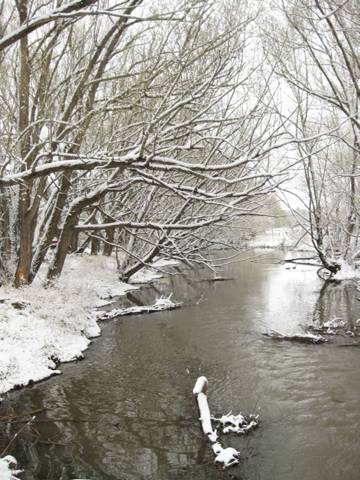
I consider a fishing trip to this part of the country in the spring the most risky time for the visiting angler. Early spring, March-April, may produce some great fly fishing opportunities, however this is the time of the year when a cold front may drop down out of Canada and stay for days. This may bring rain/snow along with very windy conditions. I have experienced some of the most miserable weather of the year during this period of the year. In addition, if you want to fish in the high country most of the lakes will still be frozen and access to the streams may prove to be impossible due to snow. All the waters in Yellowstone National Park are closed to all fishing until the last weekend in May. [Usually Memorial Day weekend]
If you are looking for dry fly fishing the early spring season may provide some great fishing, especially if you enjoying fishing with small flies. Spring Baetis and midges often provide great angling opportunities, but weather conditions may make nymph fishing the only viable way to fish. If you have unlimited time and can afford to wait out the weather early spring is an acceptable time to make a trip to this part of the country, but if your schedule and wallet demands that you limit your stay then I would suggest coming during another time of the year.
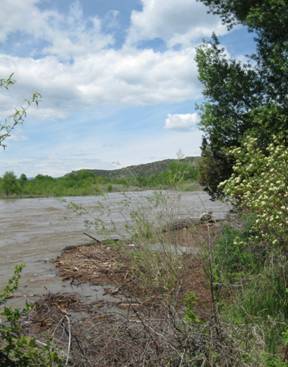
May and June continue to be months of transition, but generally the weather is more stable. The unfortunate thing about this time of the year is that the snow that has been piling up in the mountains begins to melt. May and June are the traditional run-off months, and more than one fishing trip has been ruined by spring run-off. Even in a year when the snow pack is less than normal you can almost be guaranteed to encounter water conditions that are higher than ideal for fishing. Snow melt lowers stream temperatures, limits or cancels hatches, and discolors the water. While it is possible to find streams that are not normally impacted by snow melt – tail waters and spring creeks – since these are often 'the only game in town' they may be crowded. Again, the angler that has a flexible schedule and has the capability to wait out unfavorable weather conditions and can travel to where the waters are fishable has the distinct advantage.
It's fair to note that during the late April and early May the famous 'Mother's Day Caddis hatch' takes place on many of the rivers in the Rocky Mountain West. While this hatch may present the angler with some of the best dry fly fishing of the season its timing is always difficult to predict with any certainty. Periods of cold weather may delay the hatch for days and if the weather suddenly turns warm the spring run-off may quickly make the hatch unfishable. The hatch may dribble out over a couple weeks or it may blow off in just a day or two. Again, the visiting angler is at the mercy of the weather and the angler that is most flexible with regards to their travel plans has the advantage.
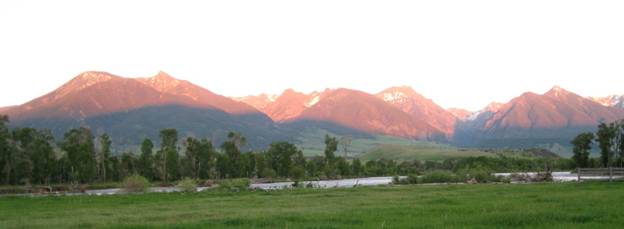
Summer – July and August – are the most stable months of the year in the Rocky Mountain West. Outside of an occasional thunder storm the weather is normally dependable and rarely will the weather, or the effects caused by the weather, ruin your fishing trip. Some streams may be off color after a big thunder shower, but they generally clear quickly. This is the height of the vacation season and the visiting angler needs to be prepared for crowds. I've heard some anglers say that it's possible to find uncrowded water during this time of the year, but unless you are fishing private water where access is limited by the property owner the visiting angler should be prepared to share the water with other anglers. This is especially true on the waters in Yellowstone National Park, and on the major trout streams and lakes in the surrounding states. I have read that you can find uncrowded water by fishing the 'lesser known waters', but in this day and age of Internet search engines, fishing blogs, and websites operated by fly shops, guides and outfitters, lesser known waters are an oxymoron. If someone isn't fishing a particular piece of water there usually is a reason for it, and the reason is normally that the fishing is poor or non-existent. I find most people don't spend several hundred dollars and their valuable vacation time to fish in waters that offer minimal opportunities.
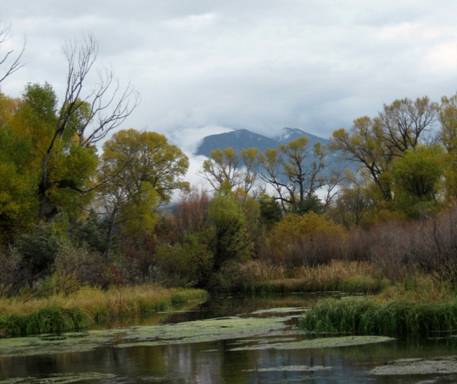
September and October are the months that mark the change from the warm days of summer to the cold days of the coming winter. Like the spring months, this time of year is often marked by periods of unsettled weather. The changing weather and decreasing day length causes brown trout to begin to move towards suitable spawning areas and all of nature begins to prepare for winter. I personal enjoy the fall months in Montana and I have enjoyed some wonderful days during this time of year. At one time this was a time when the streams and lakes were devoid of anglers but, like many other things, this has changed. The visiting angler that comes to the Rocky Mountain West with the expectation that they will find solitude during this time of the year will most likely be disappointed.
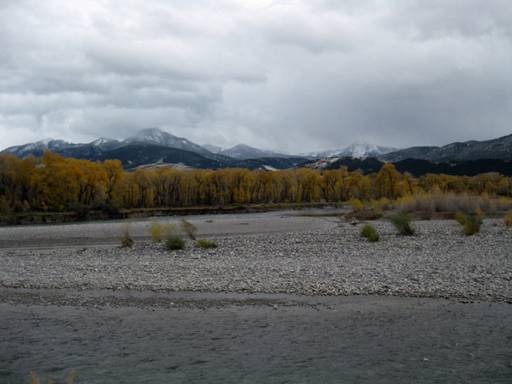
Like the early spring months the weather is always a concern for the angler during the fall. While the fall months can be marked by warm sunny days and cool crisp nights; snow, wind and cold rain may move in quickly. The visiting angler needs to be adaptable and prepared to fish under changing weather conditions. It's possible to encounter several different angling situations in one day. Early in the day you may be huddled in a down jacket and fishing in shirt sleeves in the afternoon. I think that fall fishing offers the visiting angler the greatest variety of fishing opportunities. The streams are clear and the water is beginning to cool off from the hot days of summer. It's possible to find trout feeding on dry flies from hatching insects to terrestrials. Streamer and nymph fishing may permit the visiting angler the opportunity to hook a true trophy fish.
November through February represent the winter months, but even that definition is suspect since in the Rocky Mountain West winter may show up in September and last until May. Fortunately the worst of the winter weather is normally contained within the months of November through February, and it's possible for the angler to find some good fishing, despite the weather. During the winter months the streams are generally crystal clear and with the proper precautions you can enjoy some wonderful angling opportunities. In many places in this area winter is a very windy period. While a windy day may be a warm day, figuratively speaking, the wind may make the fishing practical impossible. For the visiting angler timing is very tricky, and I would recommend that the visiting angler view any fishing opportunities during this period of the year like a gold nugget in the bottom of your gold pan. Come to ski or snowmobile, and if the weather permits enjoy a few hours of fishing.
Fishing in the Rocky Mountain West is not magic, and the visiting angler needs to approach coming to fish this area like any other fishing trip to a famous place. If solitude is your desire you are unlikely to find it on any of the waters that most people come to this part of the world to fish. The waters in Yellowstone National Park are rarely devoid of anglers but you can have good fishing even on these crowded waters. Due to the popularity of this area, especially during the summer and early fall months, I would recommend that any angler planning to come to fish in this area make their plans well in advance. Reservations for everything from places to sleep, guides, private water, airline tickets, and rental cars should be made well in advance. Making reservations one year in advance is a good idea for things like reservations on private water, and guide services. This is especially true if you have your heart set on fishing a certain piece of water or you want the services of a particular guide. In this business it's first-come, first-served.
To recap my advice to the visiting angler:
- The spring and fall may offer great angling opportunities, but the weather may upset your plans. Unless you have the time to wait out the weather this might not be the best time of the year to make a trip to this area.
- The summer is the most dependable time to visit the Rocky Mountain West. Unfortunately, it's the time when the most people come here. Crowds are the rule rather than the exception, and to make the most of your trip you should make your plans and reservations well in advance.
- Winter is winter, and unless you like snow and cold weather this is not the time to plan a fishing trip to this area. If you like skiing or other winter sports and hope that you might get a few hours of fishing during your trip by all means bring your fishing gear. However, I would not recommend planning a trip exclusively for fishing at this time of the year.
Fishing in the Rocky Mountain West is truly a wonderful adventure. The scenery is outstanding, the opportunities are virtually unlimited, the trout are wild and with proper planning and reasonable expectations the visiting angler can return home with good memories that will last a lifetime.
